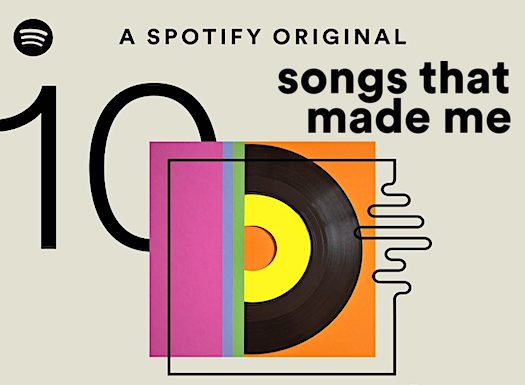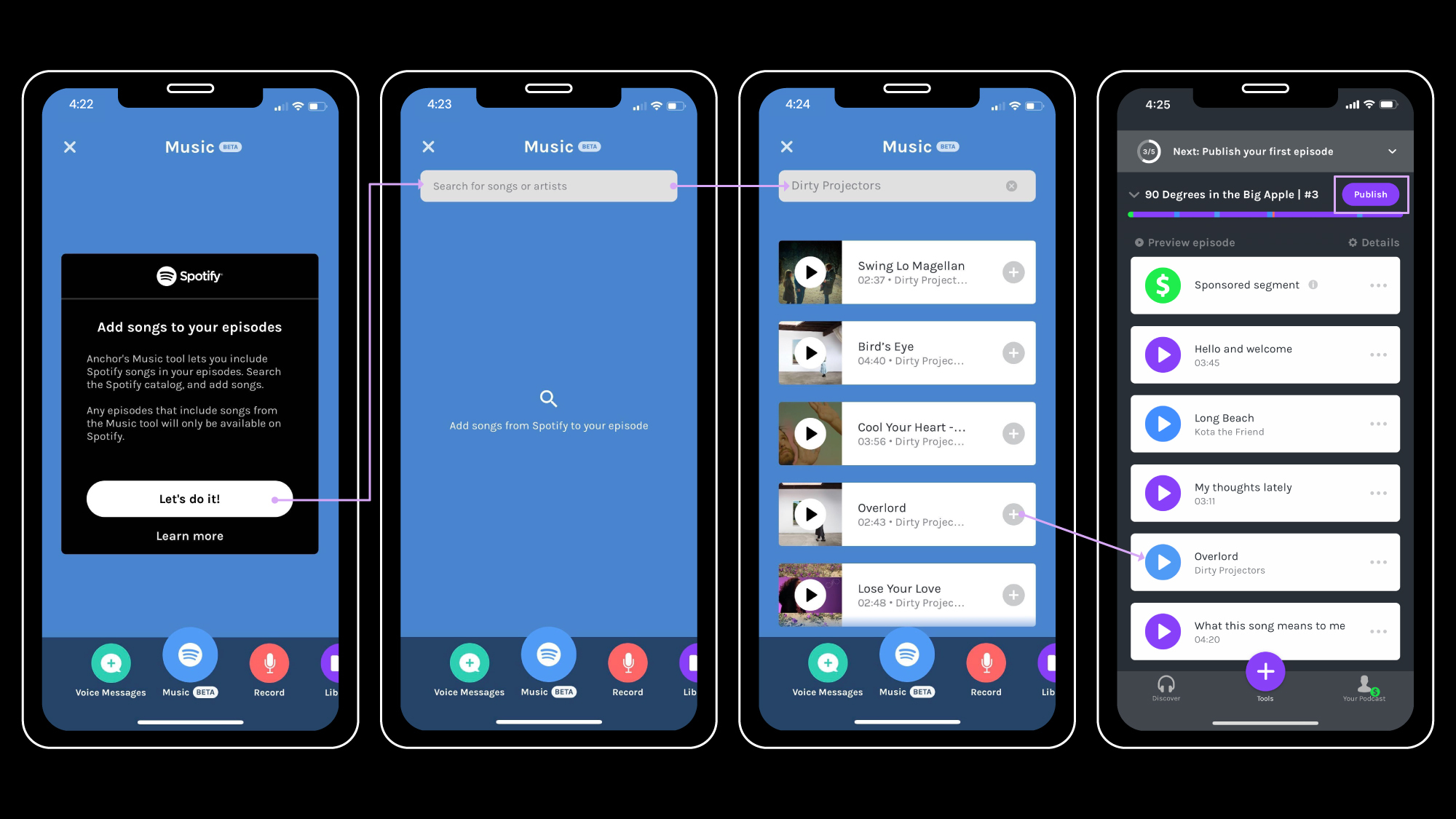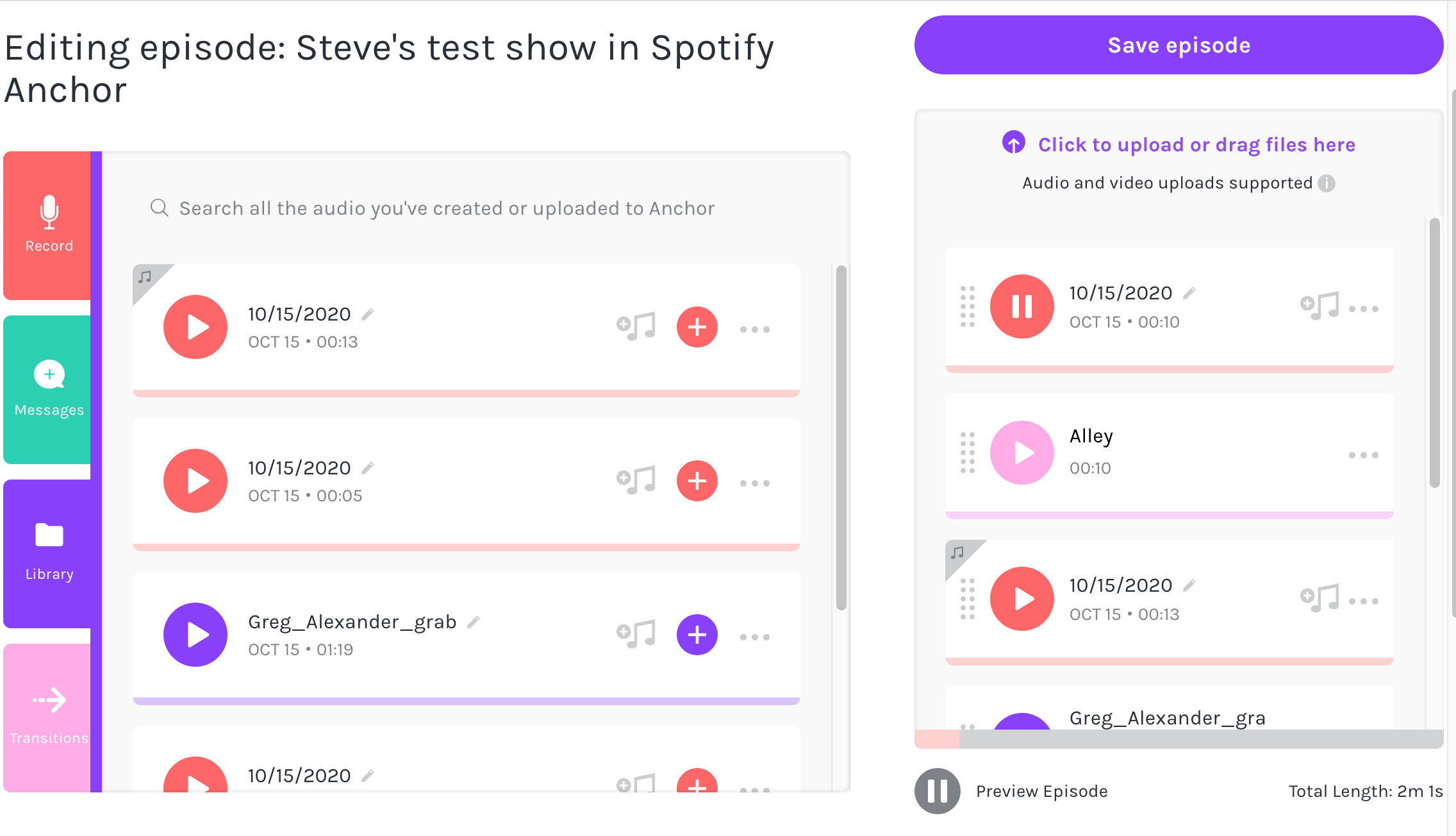Steve Ahern test drives the new Anchor function in Spotify.
One of the big problems for personalities on music radio stations is that they can’t make podcasts that sound like their radio shows.
Every day producers cut the music out of breakfast radio shows to comply with the copyright licencing rules that prevent music in podcasts, then upload them to the station’s podcast platform. But things are changing with a new innovation from Spotify, released this week in a Beta Test version.
The innovation, which lets anchors intro songs in a playlist, is the start of something that could eventually evolve music podcasting to a more live-radio-like experience. It solves the rights issues.
It took a long time for copyright owners to come to agreements with radio stations to allow them to present their broadcasts in live online streams. The problem was music rights payments. After prolonged negotiations in many countries eventually agreements were reached and payment deals were struck. But not for podcasts.
Why the difference? Because live streams are more difficult to record and pirate. Yes, we all know that live streams can be recorded if you try hard enough, but most people don’t bother.
Podcasts, however, are different because they are digital audio files that can easily be downloaded and edited to pirate as many songs from them as you like, without paying fees to the artists or paying to ‘rent’ music through an established platform.
There are two possible ways to solve this problem.
The first is to use waveform matching techniques to identify all music within every podcast and deliver payment to the artists based on the number of plays a podcast has. This would be easy to do, it is done every day on Youtube to detect and block people from using unauthorised music in their videos, but it is not generally in use for podcasts. I predict there will be a growth of this method over time, given that podcasts have been criticised recently for secretly including music without the licence to do so, as a way of creating pirate mix-tapes for friends. Once this method is perfected, it will be the easiest way for radio shows to transform to podcasts and still retain their original feel, without having to cut out the music.
The second is to integrate talk segments into normal music playlists, which are already rights-paid by the music streaming services. This second method is what Spotify has done.
The Spotify Beta initiative is clunky, without the ability to cross fade songs, maually control the volume or trim the top and tail of talk breaks. You can’t do anything very sophisticated, but it’s only version 1. The ultimate aim is presumably to create playlists that sound like live radio shows, even including triggers to play news bulletins from flash briefings and other information segments, during each ‘show.’
Podnews’ James Cridland likes the new innovation, telling radioinfo: “Research already says that podcasting and on-demand audio are beating live radio on a smartphone – but the lack, until now, of on-demand music programming with a human voice has held on-demand audio back. This new platform isn’t, yet, as smooth as a good radio program: but it could be a game-changer for intelligent music presentation. Double J with a skip button? Count me in!”
Along with the launch of the new service, Spotify has released 7 Spotify Original Shows that use the feature. Each explores a different aspect of music, from the stories and inspiration behind a song to the listening trends of a decade or genre. The shows can be found in the Shows with Music hub in Spotify, or in a programmed shelf on the Home tab.
- 10 Songs that Made Me
- Rock This With Allison Hagendorf
- 60 Songs that Explain the 90s
- Conspiracy Theories: Music Edition
- Our Love Song
- Halleloo Happy Hour with DJ Shangela
- Murder Ballads
So how does it work?
The show creation tool is called Anchor. I used it to create my test show here anchor.fm/steve1234, I wonder if Spotify will approve it?
Adding songs from Spotify’s existing catalog is possible from your library search list, if you are a signed in premium customer, but not every listener will hear the full songs. Spotify Premium listeners will hear full tracks as part of these shows, those with the Free tier will hear only 30-second track previews.
When creating a new episode, show creators select the new ‘Music’ tool to access the catalog then search for songs or artists. It is technically possible to upload your own music files, but it is against the rules and Spotify will check what you have loaded. I had some difficulty selecting songs, but the rest of the functions worked easily.
Build and arrange the episode by dragging and dropping songs, then record your voice in Anchor or upload an existing file. You can also split the uploaded audio to add songs within it.
Musicians will get paid as they would for any other stream on Spotify.
For listeners to the hosted playlist, track lists and likes for each song are part of the experience, just as they are within Spotify’s main service. They can even send voice messages that the host can include in the show.
Monetization options are included. Hosts can upload their own ad segment into a show as long as it is marked as an ad in the episode builder. American users can insert ads via the Anchor Sponsorships tool. Advertisements must follow the monetization guidelines.
During the current beta test period, episodes containing music will undergo a review process before being published to Spotify to ensure that they follow Anchor and Spotify’s community guidelines, terms of service, and monetization rules.
It’s not a perfect solution, but it’s not a bad start. It will be useful for amateur radio announcers and home mix-tape makers.
About the Author
 Steve is Head of the Asia Pacific Broadcasting Union Media Academy and founding editor of this website.
Steve is Head of the Asia Pacific Broadcasting Union Media Academy and founding editor of this website.
He is a former broadcaster, programmer, senior executive and trainer, and a regular writer and speaker about trends in media.
More info here.



